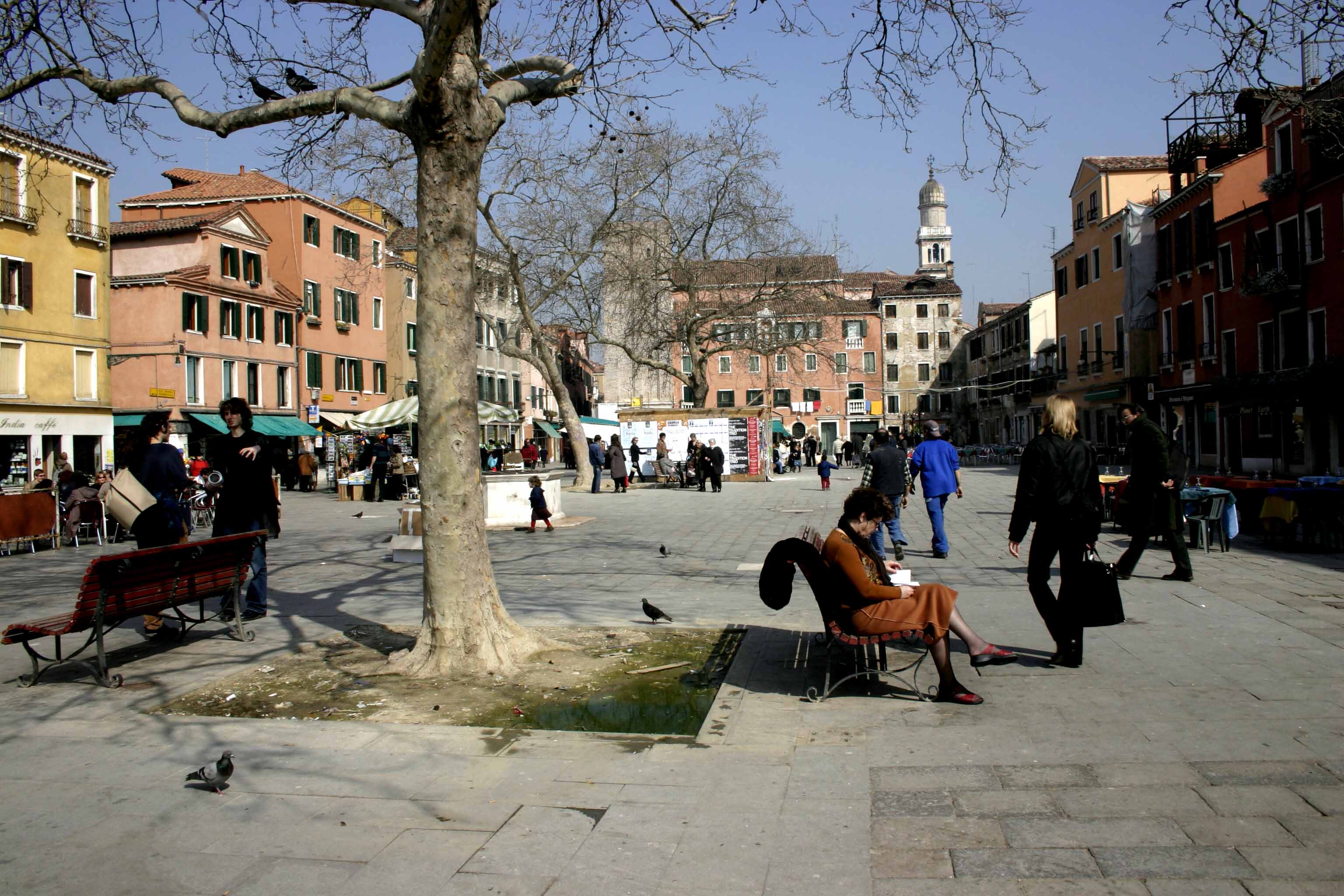Campo Santa Margherita
 Piazze
Piazze
Descrizione
Campo Santa Margherita si trova a Venezia nel centro del sestiere di Dorso Duro ed è uno dei luoghi più vivi della città. In Campo Santa Margherita sono concentrati numerosi locali che vengono frequentati sia nel periodo invernale che in quello estivo grazie ai tavolini posizionati fuori dai bar, pub, ristoranti e pizzerie. In Campo Santa Margherita si possono ancora vedere i veneziani intenti nel loro vivere quotidiano, ma anche i bambini che sfruttano al meglio questa area per giocare di pomeriggio e durante la domenica. Campo Santa Margherita è uno degli spazi più ampi di Venezia dopo Piazza S. Marco e Campo S. Polo. Nei suoi locali si anima la vita serale e notturna della città, qui si consuma lo spritz durante l'happy hour ed oltre. Per questo motivo Campo Santa Margherita, (assieme al Campo S. Giacometto a Rialto), è il luogo preferito dai giovani ma anche da molti turisti per trascorrere in compagnia la serata.
Chiesa di Santa Margherita
Il campo deve il proprio nome all'antica Chiesa di Santa Margherita fondata nel IX secolo e dedicata alla omonima martire. Essa fu riedificata nel 1687 su progetto dell'architetto Giambattista Lambranzi. La Chiesa di Santa Margherita fu soppressa nel 1810 a causa delle riforme napoleoniche e fu adibita per un periodo alla manifattura dei tabacchi e quindi a deposito di marmi. Essa diventò tempio evangelico nel 1882 ed in seguito divenne un cinema, conosciuto come Cinema S. Margherita o in dialetto veneziano Cine Vecio, per distinguerlo dal Cinema Moderno, localizzato un tempo dove adesso si trova il Supermercato Punto. Il suo uso attuale è quello di auditorium dell'Università di Ca' Foscari. Incorporato nella costruzione si vede il tipico campanile mozzo, così troncato nel 1808. Alla sua base sono posti alcuni interessanti frammenti in marmo del seicento, tra i quali spiccano un drago ed un mostro marino.
Scuola dei Varoteri
Al centro del campo si trova un edificio isolato, la Scuola dei Varoteri (che era la sede dei conciatori di pelle fin dal 1725). Sulla facciata si vede un bel tabernacolo, "La Vergine adorata da confratelli in ginocchio", del 1501. Nei suoi pressi rimane aperta di mattina (da martedi a sabato) la Pescheria in Campo Santa Margherita. Di fronte ad essa sono notevoli alcune case che risalgono al periodo gotico. All'estremità di Campo Santa Margherita si erge la Chiesa di Santa Maria del Carmelo detta anche dei "Carmini" che venne eretta a partire dal 1286 ma conserva all'esterno alcune belle patere in stile veneto-bizantino. Al suo interno, nella navata mediana, si può ammirare un ciclo di 24 tele (12 per lato) chiamato "Episodi dell'Ordine dei Carmelitani". A fianco della chiesa si trova la Scuola di Santa Maria del Carmine che fu costruita in stile classico su progetto di Baldassarre Longhena tra il 1668 ed il 1670. Dentro alla Scuola si conserva il bellissimo ciclo di tele eseguite da Giambattista Tiepolo.
Fonte: innvenice.com
Campo Santa Margherita is located in Venice, just in the center of the district of Dorso Duro and is one of the liveliest corners of the city. In Campo Santa Margherita are concentrated many clubs that are frequented both in winter and in the summer thanks to the tables placed outside bars, pubs, restaurants and pizzerias. In Campo Santa Margherita you can still see the Venetians intent on their daily lives, but also watch the children playing in the afternoon and on Sundays. Campo Santa Margherita is one of the larger open places in Venice after St. Mark's Square and Campo S. Polo. This square is celebrated for its night life. Here is consumed spritz (a local drink) during happy hour and beyond. For this reason Campo Santa Margherita, (along with Campo S. Giacometto at Rialto), is the favorite place in Venice for young people but also for many tourists that enjoy the friendly atmosphere of this square.
Church of Santa Margherita
The square is named after the ancient Church of Santa Margherita, founded in the ninth century and dedicated to that martyr. It was rebuilt in 1687 by architect Giambattista Lambranzi. The Church of Santa Margherita was abolished in 1810 because of the Napoleonic reforms and was used for a period as a cigarette factory and then as a store of marbles. It became evangelical church in 1882 and later became a cinema, known as Cinema S. Margherita or in Venetian dialect "Cine Vecio", to distinguish it from "Cine Novo", once located where now is the Supermarket Punto. Actually it is an auditorium owned by the University of Ca' Foscari. Incorporated into the building you can see the typical belltower so truncated in 1808. At its base are located some interesting marble fragments of the seventeenth century, among these are visible a dragon and a sea monster.
Scuola dei Varoteri
At the center of the square is located an isolated building, the Scuola dei Varoteri (which was the seat of the tanners since 1725). On the facade you see a beautiful tabernacle, "The Virgin adored by brother on her knees", (1501). Near it is open in the morning (from Tuesday to Saturday) the fish market of Campo Santa Margherita. In front of it are some notable houses dating from the Gothic period. At the end of Campo Santa Margherita is situated the Church of Santa Maria del Carmelo also called "dei Carmini", which was built in 1286 but retains some nice outside paterae in Venetian-Byzantine style. Inside you can see a cycle of 24 paintings (12 per side) called "Episodes of the Carmelite Order". Next to the church is the Scuola di Santa Maria del Carmine that was built in a Classical style designed by Longhena between 1668 and 1670. Inside the Scuola there are some beautiful series of paintings made by Giambattista Tiepolo.
Source: innvenice.com.

